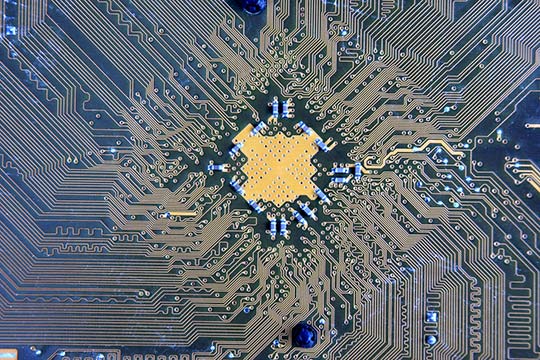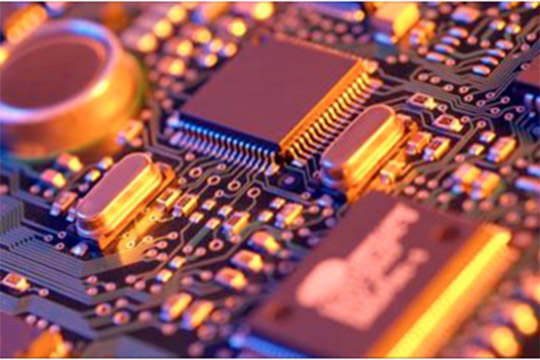TECHNOLOGY FOCUS
The Internet of Things (IoT) enables a huge variety of new business possibilities by connecting sensors, identification tags, actuators or meters to the internet. Many of these devices use batteries or energy harvesters as a power supply. In these cases, wireless connectivity plays a key role in the transmission of information from and to the internet.
Designers of IoT systems or elements have to choose the wireless technology that fits best the given requirements, to select appropriate IC devices, to implement the hardware including the embedded system, RF circuits and antenna and to integrate the protocol interface into their application.
The course “Wireless connectivity for the Internet of Things” addresses exactly these topics. Beginning from an introduction into the IoT and a discussion of some practical examples, the radio regulations that define the framework for any wireless connection are introduced. A discussion of widely used wireless standards makes it easier to define the best protocol for the given application. The focus of the seminar is then put on the introduction of RF basics, the implementation of RF hardware and the antenna design.
Throughout the course, practical examples and demonstrations are used to make the subject matter more comprehensible.


COURSE CONTENT
Starting from a system level consideration and ending with an example of a practical realization, the course enables the participant to implement a wireless system on the PCB level that connects sensors and actuators to the internet.
Particular attention is paid on the tuition of immediately applicable knowledge. The tools most frequently used in RF engineering are introduced, their application is exercised on practical examples
WHO SHOULD ATTEND
This course addresses engineers who have to connect sensors and actuators wirelessly to the internet. Beyond that, especially people who are new in the field of RF will get a thorough introduction into the concepts and tools used in RF technology.

Monday
Introduction to the IoT
The concept of the internet of things, promising fields of applications and resulting requirements to wireless devices are introduced
- What is the Internet of Things?
- IoT messaging technologies
- Demonstration of IoT sensors
- Requirements to wireless connectivity systems for the Internet of Things
RF system considerations
This section gives an overview on the modulation formats and multiple access techniques used in wireless transmission systems. Typical transmitter and receiver architectures are introduced; their advantages and disadvantages will be discussed.
- Block diagrams of wireless transmitters and receivers
- Noise and sensitivity vs. data rate
- Nonlinear distortions
- Modulation methods
- BER vs. signal-to-noise-ratio in digital modulation
- Multiple access techniques
- Radio regulations and examples of wireless standards
- Wireless sensor link technologies
- Backhaul technologies
Tuesday
RF Basics
We discuss the exceptional features of the radio frequency range, complex numbers, logarithmic scales, impedance and admittance concepts. The features of ideal and real passive components at radio frequencies will be explained. Then we consider resonant circuits, transmission lines, reflection, and matching. The use of the Smith Chart as a tool to solve matching tasks will be extensively practiced. Based on the explanation of features of transmission lines, practical hints for RF PCB design are given.
- Complex numbers
- Logarithmic scales
- Passive components
- The Impact of Parasitics
- Resonant Circuits
- Reflection and Matching
- The Smith Chart and Its Application
- 2-port-parameters and S-parameters in Particular
Wednesday
RF Basics (continued)
- Transmission lines
- RF PCB Design
- Network Analysis Software Tools
Building Blocks of Wireless Transmitters and Receivers
Based on the knowledge obtained in the previous section, building blocks of wireless receivers and transmitters will be treated. The course lets the participant understand the principal function and the specifications of low noise amplifiers, power amplifiers, oscillators, and mixers. Practical hints to use integrated circuits that contain these building blocks are given.
- Amplifier Design
- Stability of Amplifiers
- Loci of Constant Noise Figure
- The available gain concept
- LNA Design Example
- Power Amplifiers
- Oscillators
- VCO Tank Circuit Design
- Mixers
Thursday
Phase Locked Loop Synthesizers
PLLs are used in almost any modern wireless device. A sound understanding of the PLL features helps to avoid performance problems in transmitters and receivers.
- Transfer functions, stability criteria
- Characteristic function and Bode plots
- Description of Phase Noise
- Impact of Phase Noise on the System Performance
- PLL with 1st order loop filter
- Lock Time, Natural Frequency, Damping Factor, and Phase Margin
- Sources of Phase Noise in a PLL and its Simulation
- 2nd-, 3rd-, and Higher-order Filter
- Phase and Frequency Modulation in a PLL
- Loop Filter Dimensioning from Lock Time Requirements
Antennas and Propagation
We explain parameters describing antennas and discuss the relationships between them. Antenna types for small and handheld devices are introduced; their advantages and disadvantages will be discussed from a practical point of view. Then we will consider the propagation of RF waves in free space and inside buildings, and introduce methods of predicting the maximum reach of a RF link. At the end of the session practical hints for the measurement of antenna parameters are given.
- Antenna Parameters
- Electrical Antennas
- Magnetical Antennas
Friday
Antennas and Propagation (continued)
- Practical Comparison of Antenna Types for an Example Application
- The RF Link Budget
- Path Loss Prediction in Free Space and Inside Buildings
- Multipath Effects and Their Mitigation
- Measurement of Antenna Parameters
Application Example
The course concludes with a case study starting with the requirements of a simple practical design task, ending up with the practical implementation and demonstration of several versions using ICs including PCB layout and antenna.

